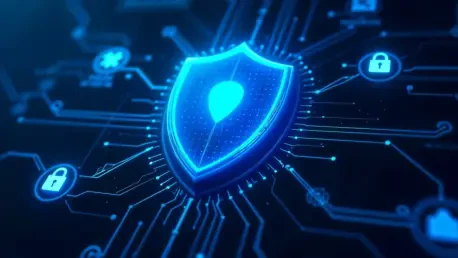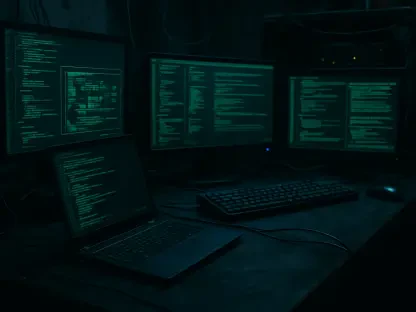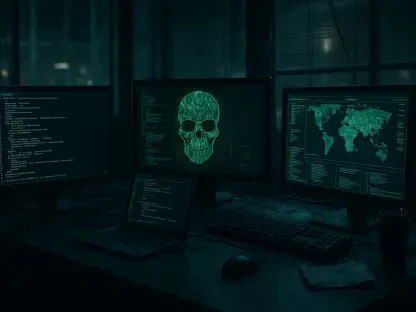In the ever-evolving landscape of cybersecurity, 2025 has witnessed an array of advanced threats and innovative defense mechanisms. This comprehensive overview delves into recent cybersecurity incidents, the duality of some professionals navigating both legal and illegal realms, and the broad, well-orchestrated attacks by sophisticated actors. Through exploring these topics, insight is provided into the current defense strategies, emphasizing the importance of continuous vigilance in mitigating emerging threats and securing critical infrastructures.
Prominent Cyber Incidents and the Dual Nature of Cybersecurity Professionals
The tech industry has encountered significant cybersecurity incidents, drawing attention to the dual roles that some professionals assume within the cyber world. A striking example is the professional hacker known as “EncryptHub,” who has starkly demonstrated the complexities and duality within the cybersecurity community. EncryptHub, recognized for uncovering substantial security vulnerabilities in Windows, showcases an intriguing paradox of contributing to global security while simultaneously engaging in over 618 cyber breaches. This dichotomy illustrates the fine line that cybersecurity professionals often navigate, balancing ethical contributions with darker undertakings.
Among the critical discoveries attributed to EncryptHub are the Mark-of-the-Web (MotW) security bypass (CVE-2025-24061) and another Windows flaw (CVE-2025-24071). Microsoft’s quick patching of these vulnerabilities emphasizes the crucial interplay between ethical hackers and tech giants working to fortify cybersecurity defenses. This scenario sheds light on the importance of such professional hackers in identifying and resolving security flaws while also highlighting the potential risks associated with their proficiency and insider knowledge. The delicate equilibrium between collaborative ethical hacking and illicit activities continues to shape the cybersecurity landscape, demanding rigorous oversight and continuous innovation in defense measures.
Coordinated Cyber-Espionage Campaigns
A prominent discussion in the realm of cybersecurity focuses on the surge in coordinated login scanning aimed at Palo Alto Networks PAN-OS GlobalProtect gateways. This large-scale, orchestrated effort, involving nearly 24,000 unique IP addresses, offers a glimpse into the precision and scope of modern cyber-espionage campaigns. The threat intelligence firm GreyNoise has provided valuable insights into these activities, emphasizing that such broad-based scanning often serves as a preliminary phase for more targeted exploitation efforts.
The coordinated nature of these cyber-espionage campaigns underscores the sophisticated tactics employed by threat actors. The highest volume of scan traffic originating from the United States and Canada suggests a sizable network of compromised or cooperative sources. The potential consequences of these well-organized attacks are substantial, presenting a heightened risk to security infrastructures across various sectors. Understanding the intricate web of sources behind these efforts is crucial for anticipating and mitigating subsequent threats, emphasizing the continuous arms race between cyber attackers and those dedicated to defending vital systems.
Nation-State APTs and Multi-Stage Intrusions
The cybersecurity world has also been abuzz with activities attributed to a newly identified China-linked group, Earth Alux. This advanced persistent threat (APT) group has exhibited a sophisticated approach in targeting sectors such as government, technology, and retail industries. Earth Alux employs multi-stage intrusions that encompass exploits in internet-exposed web applications, subsequently deploying potent malware, including the Godzilla web shell and backdoors named VARGEIT and COBEACON.
A detailed timeline reveals Earth Alux’s strategic expansion, beginning in the Asia-Pacific region before extending into Latin America. This progression underscores the global scale and implications of nation-state-sponsored cyber activities. The group’s ability to execute complex, multi-layered attacks demonstrates the ongoing evolution of cybersecurity threats posed by state actors. The broader geopolitical ramifications highlighted by these activities emphasize the critical need for enhanced defense strategies and international collaboration in countering sophisticated and well-funded adversaries across strategic industries worldwide.
Zero-Day Vulnerabilities and Tech Giants’ Responses
The persistent threat of zero-day vulnerabilities remains a pressing concern in the cybersecurity landscape. A notable case in point involves Google’s response to the actively exploited 0-day vulnerability in its Chrome browser, identified as CVE-2025-2783. This high-severity flaw was leveraged in targeted attacks against Russian entities, highlighting the criticality of quick and effective responses by tech firms in the face of emerging threats.
Google’s adept handling of this exploit underscores the importance of timely security patches and continuous vigilance. The targeted nature of the attacks against specific entities showcases the precision with which threat actors operate, as well as the ongoing challenge for tech companies to stay one step ahead. This scenario encapsulates the dynamic interplay between attackers and defenders, with tech giants like Google leading the charge in rapidly addressing vulnerabilities as part of the broader, relentless battle against cyber threats.
Cloud Security and Shared Responsibility Models
The transition to cloud computing has brought its set of cybersecurity challenges, notably illustrated through the shared responsibility model adopted by Amazon Web Services (AWS). While AWS ensures the security of the underlying infrastructure, the onus is on users to safeguard their data and configurations. This division of responsibilities is frequently misunderstood, leading to gaps in security that cyber attackers are eager to exploit.
Real-world examples demonstrate the vulnerabilities that can arise from misconfigurations and oversight in cloud environments. Security scanners like Intruder play a vital role in identifying and addressing these issues, prompting proactive measures to protect cloud-based assets from increasingly sophisticated threats. The continuous monitoring and security management within cloud environments are necessary to maintain robust defenses and prevent potential exploits that could compromise sensitive data and operations.
Continuous Vigilance and Cybersecurity Education
In the rapidly changing world of cybersecurity, the year 2025 has seen a mix of advanced threats and pioneering protective measures. This detailed analysis reviews some recent cybersecurity incidents, highlighting the dual roles of certain professionals who operate within both legal and illegal cyber spheres. Additionally, it discusses the intricate, well-coordinated attacks executed by highly skilled adversaries. By examining these themes, we gain a deeper understanding of the contemporary defense tactics being employed. The focus is on the necessity of maintaining constant alertness to combat new and developing threats and to safeguard essential infrastructures. This ongoing cycle of threat and defense underlines the pivotal role of continuous improvement in security protocols to stay ahead of potential cyber threats. Thus, the exploration underscores the need for robust, proactive measures to effectively defend against the perpetual evolution of cyber risks and to protect critical systems from potential harm.









